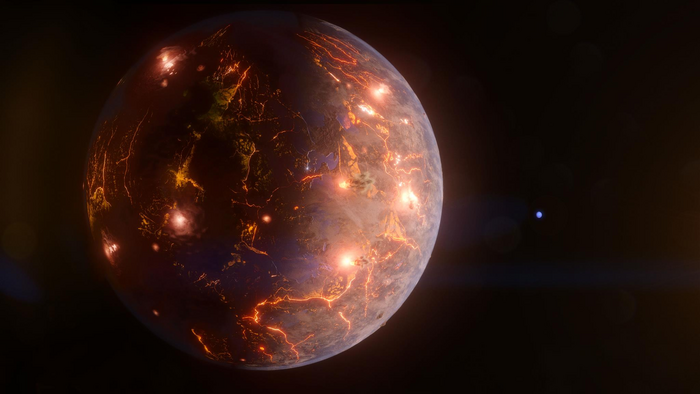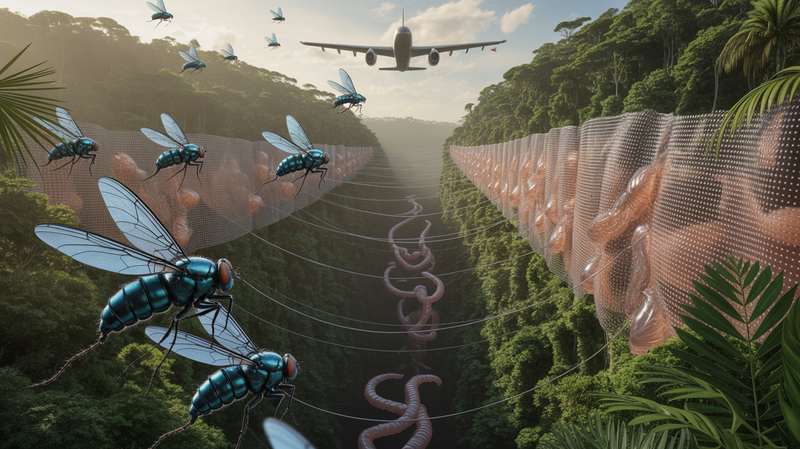LP 791-18d: A Cosmic Dance of Volcanoes and Possibilities
Nestled in the far reaches of space, approximately 90 light years away, orbits a planet that might offer us vital insights into the intricacies of life-supporting conditions. The newly discovered planet, named LP 791-18d, circles a petite red dwarf star and presents a unique spectacle to astronomers: an exotic world

Nestled in the far reaches of space, approximately 90 light years away, orbits a planet that might offer us vital insights into the intricacies of life-supporting conditions. The newly discovered planet, named LP 791-18d, circles a petite red dwarf star and presents a unique spectacle to astronomers: an exotic world likely adorned with the dramatic presence of volcanoes.
Why does this volcanic characteristic pique the interest of the scientific community, you might ask? According to UC Riverside astrophysicist Stephen Kane, the significance lies in the interaction facilitated by volcanic activity between the planet's interior and exterior. This interaction, through the release of gases and other materials, can contribute substantially to the formation of a planetary atmosphere. And with an atmosphere comes the possibility of sustaining liquid water, a prerequisite for life as we understand it.
The star system that LP 791-18d calls home is not a lonely one. It shares its stellar dance with two other known celestial bodies: LP 791-18b and LP 791-18c. Planet c, being almost nine times the mass of Earth and 2.5 times its size, plays a crucial role in the life of its smaller companion, planet d. The massive gravitational influence of planet c tugs at planet d, causing its orbit to be more elliptical than circular. This gravitational ballet results in friction that heats planet d's interior, triggering surface volcanic activity.
The discovery of this unique planet was made possible through data analysis from NASA's Transiting Exoplanet Survey Satellite (TESS) and the now-retired Spitzer Space Telescope. A remarkable feature of LP 791-18d, as revealed in the research paper published in Nature, is its tidally locked state, with one side perpetually facing its star. According to Björn Benneke, a co-author of the paper and an astronomy professor at the University of Montreal, this may result in extreme surface temperatures on the day side, but the volcanic activity might still be able to sustain an atmosphere, potentially facilitating water condensation on the cooler night side.
Although the relentless volcanic eruptions would likely render LP 791-18d inhospitable, they provide invaluable insights into the evolution of planets. One of the paramount questions in astrobiology is whether tectonic or volcanic activity is necessary for life. These activities can bring to the surface materials crucial for life, such as carbon, which might otherwise be trapped in the crust.
The discovery of active volcanoes on Venus, a planet roughly Earth's size, demonstrates that volcanic emissions can continue to contribute to a planet's atmosphere even without the presence of plate tectonics. The main constituents of these emissions are carbon dioxide and water vapor, greenhouse gases that can contribute to warming a planet.
Stephen Kane draws a parallel between the extreme conditions on Venus, with surface temperatures surpassing 850 degrees Fahrenheit, and the possible fate of a volcanically active planet like LP 791-18d. While the scorching temperatures on Venus make life unlikely there today, it might not have always been this way. Volcanoes could be a key factor in understanding the history of Venus, and similarly, planets like LP 791-18d could help us comprehend how volcanic activities shape planetary environments over time, potentially even shedding light on the evolution of our home, Earth.




